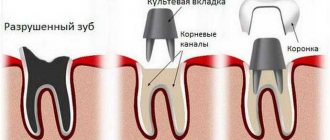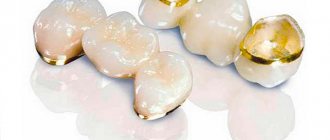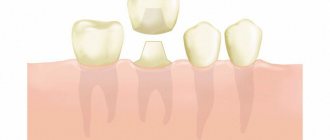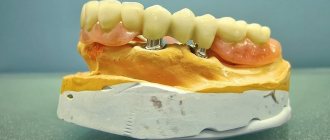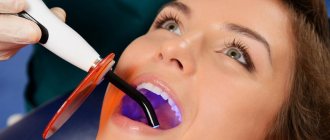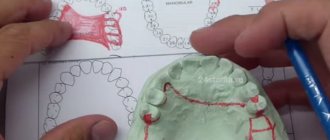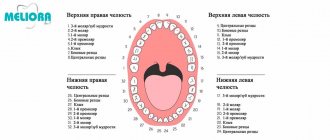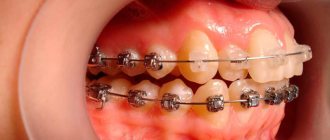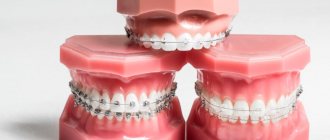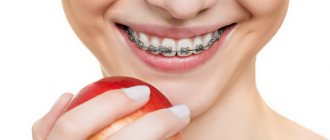general information
This useful device makes life easier for the baby and parents. The baby chews and sucks on a toy made of safe, fairly hard material. In the process, the gums are massaged, the soft tissue is strengthened, and swelling is reduced.
The product for teething children has a different shape. To interest the baby and distract attention from pain and itching, manufacturers offer hundreds of models. The assortment is for every taste: from a simple bright ring to original toys in the shape of a giraffe, fish or flower.
For little ones who cannot part with their pacifier, manufacturers have developed an original teether that resembles a pacifier. Thanks to the fairly durable but elastic material, the baby not only satisfies the need for sucking, but also massages the gums.
Teethers for children: instructions for choosing depending on age
When choosing a baby teether, it is important to consider what kind of tooth the child is cutting.
So, when the baby’s central incisors appear, it is better for parents to choose simple models made of soft silicone or latex, which have a special slot for placing the toy in the child’s hand. If your baby is cutting premolars, you should give preference to oval teethers of medium hardness with special protrusions to stimulate the lateral gums. A child whose back molars will soon appear can be offered a hard teether with fabric elements that absorb copious amounts of drool. Regardless of the baby’s age, the number of teeth that have already appeared and the intensity of pain, when choosing a teether, it is important to take into account the following parameters of the toy:
- the ability to wash and sterilize the device;
- the harmlessness of the material from which the baby teether is made;
- the absence of small elements that the child is able to bite off and swallow;
- light weight of the product and absence of sharp corners;
- correspondence of the size of the accessory to the age of the baby;
- The brighter the baby teether, the more interest the device will cause in the child.
Five reasons why you should buy chewers for babies:
- massage of sore gums;
- cooling, relieving swelling;
- distraction, anxiety relief;
- positive emotions,
- development of tactile sensations, familiarity with color and sound.
Most modern devices not only ease the baby’s suffering when teething, but also provide knowledge about the world around us. Bright products are made in the shape of animals, plants, and there is even a teething book. The baby is interested, he enthusiastically chews on the toy and, at the same time, massages his swollen gums.
What are the benefits and how to use Miswak teeth cleaning stick?
We have the answer! Read about the specifics of dental endobleaching on this page.
How to tell if your baby is teething
Teething in a child does not last a day or two, or even a month. This is a long and not always clearly expressed process, which gives the baby unpleasant sensations. Sometimes it is difficult to determine that a baby’s tooth will come out soon. Experienced parents identify a number of signs that indicate the appearance of teeth in children:
- increased saliva volume;
- swelling of the gums, accompanied by an increase in body temperature;
- the child behaves restlessly during feeding and refuses his favorite food;
- worsening sleep and behavior of the baby;
- the child is capricious and pulls into his mouth what comes into view.
A special powder, gel or ointment can alleviate the baby’s suffering. If you don’t want to stuff your baby with medications one more time, a special baby teether can be a solution to the problem.
Operating principle
The principle is simple:
- when pressure is applied to the gums, blood circulation improves and pain decreases;
- a silicone, rubberized or polypropylene base gently rubs the areas where teeth will soon erupt;
- the cooling gel inside the ring reduces inflammation and has a mild analgesic effect.
Note! Unlike dental gels and painkillers, which the doctor often prescribes during the period of teething, the rodent does not have a harmful effect on the body. The main thing is to buy a device made of non-toxic, high-quality material.
Rating of the best models of teethers for children
There are a number of companies specializing in the production of children's products. An approximate rating of manufacturers producing teethers is given below. It will help you navigate and choose the right option:
- The most common and affordable are the “rodents” of the domestic brand “Kurnosiki”. A large selection of bright, funny toys designed for babies from 3, 4 and 7 months will allow you to make the right choice. The product range contains teethers with a cooling effect and teethers with filler.
- Polish can offer even cheaper options. The teethers are made of silicone in calm colors; there are models with filler and a cooling effect.
- The British company produces comfortable teethers with water (distilled water) and gel filling. The toys are very comfortable for the baby and are made of thermoplastic rubber.
- Japanese "Pigeon" are designed for children of different ages. For those who are only 3 months old, rattle teethers are available. The earlier development of hearing compared to vision in babies makes them attractive to consumers. Bright, intricate designs for babies 4-7 months will not only help relieve tension in the gums, but will also entertain the baby.
- An interesting American model is a toothbrush. This product can be chewed and then used as the first brush, teaching the baby to perform hygienic activities.
Types of rodents for babies
Well-known companies producing products for children offer a wide range of “rodents”. Pediatricians recommend that parents buy several devices: the baby will choose what he likes.
Depending on the shape, filler, functionality, the following modifications are distinguished:
- silicone chewer. Product for the youngest children aged 3–5 months. The soft base is non-toxic and gently massages delicate gums. The convenient device is light in weight, has a convenient shape for gripping, and is often made in the shape of a ring;
- teether with water or gel. Product for older children. A useful function is cooling. Cold reduces discomfort and relieves pain in swollen areas. Place the cooling teether in the refrigerator. Do not put the product in the freezer under any circumstances. The frozen gel will gradually numb the gums during the massage;
- pacifier-teether. A useful device for babies who are sensitive to their favorite pacifier. The nipple material is more durable, with pimples and relief stripes;
- teether-rattle. Balls and rings are added to the bright base. The baby not only massages painful areas, but also develops attention and is well distracted. Choose an option with reliable fastening and suitable size of additional parts;
- vibrating rodent. Parents rave about the original teether. The device runs on batteries. The baby squeezes the miracle rodent with his gums, and the “vibration” mode turns on. The baby is happy, unusual sensations and soft vibration massage are a good distraction from unpleasant sensations;
- book with silicone or plastic inserts. Suitable for children who prefer bright pictures and rustling pages. Teethers in the form of toys and rings are attached in several places. An inquisitive child tastes the book, simultaneously massages his gums and enjoys the vivid sensations.
Don't give up on this useful device: the teether has one more advantage. The baby chews on a ring or a giraffe, is distracted, is less capricious, and sleep returns to normal. The baby and parents retain their nerve cells, and the atmosphere in the family is calmer.
Photo gallery “What types of teethers are there?”
Universal teether
Teether with vibration
Teether rattle
Cooling teether
Teether-pacifier
Teether in the form of a finger attachment
Simple silicone teether
How to choose a good teether
Listen to the recommendations of pediatricians, pay attention to the main points:
- safety. Never save money. Cheap Chinese plastic often peels off and often contains toxic components. Always ask the store for a hygiene certificate; if they refuse, look for another teether with supporting documents;
- interesting shape, nice color. Choose a device of an original shape, made of bright materials, so that the baby is interested. A rattle, a book, fruits and berries, funny animals - a choice for every taste;
- rodent size. An important point that parents often forget about. Too big and heavy will constantly fall out of your hands, a small teether is dangerous - the child can put it completely in his mouth. Also check the integrity of the product: never take the teether if the surface crumbles or the paint peels off;
- age. Select a product according to the age of the little explorer. Silicone models are suitable for babies aged 3–5 months. When cutting through the lateral incisors, you will need to modify the oval shape with a medium degree of rigidity. When the distant teeth are cutting, offer your child a model made of a harder material, a convenient shape, to massage the desired area.
TOP 5 quality teethers
Which teether is better than others? There is no clear answer here. Still, the choice of this device is individual. Some people like soft rubberized material, others like gel filler and massage pimples. For older children, more rigid models are suitable.
Global manufacturers of children's goods have released a wide range of baby teethers. The choice is up to the parents of the little explorer and, of course, to himself. The best option would be to purchase several toys at once. The child will get to know them and choose the one that is most convenient for him at the moment.
Nuby
Nuby
Teethers from Nuby have won the trust of many mothers. They are made in the form of contrasting bright toys. Kids love them. These teethers are universal, developing their horizons, imaginative thinking and finger motor skills. Nuby toys are suitable for children from 3 months and are made of silicone, soft and rubberized plastic.
Tommee tippee
Tommee tippee
The English company Tommee tippee produces excellent models of teethers for medium teeth. Such models contain several surface options, allowing the baby to choose the one he likes.
The company makes teethers from safe rubberized plastic. The products are recommended for use from 4 months of age.
Vulli
Vulli - Sophie the giraffe, Sham mushroom
The French company Vulli produces many popular models of teething toys. The most popular are Sophie the giraffe and Sham mushroom. Their interesting design and functionality appeal to both children and mothers.
How to properly give chews to babies
The rules are simple:
- always wash the product with warm water and baby soap, remove any remaining product thoroughly, and wipe dry;
- Place the cooling teether in the refrigerator for 30 minutes. It is forbidden to place the device in the freezer: the material may crumble;
- after use, also rinse the ring, flower or polypropylene giraffe;
- Store the product in a clean box, away from batteries. Never heat a rodent in the microwave, boil it, or put it in the dishwasher.
Important! If the paint wears off and pieces of material fall off, throw away the device without regret: there will be no benefit from the damaged product.
Range
The stores offer a wide range of baby teethers.
Among all the diversity, three functional categories can be distinguished.
- Regular teethers.
- Teethers filled with water or special gel.
- Teethers with vibration to activate blood circulation in the gums.
- Simple silicone teether. Made in the form of a small bright toy (car, boat, bunny, baby elephant, etc.). It is flat and has holes in it so that it is convenient for the child to grasp it with his hand.
- Teether in the form of a finger attachment. It has special pimples or soft bristles. The mother puts on this attachment and gently massages the baby’s gums. However, not all children like this type of massage. Many people prefer to simply chew on their own finger.
- Universal teether. Combines several functions. For example, a teether and a hanging toy. Such toys contain bright elements, rustling parts, smooth and rough plastic rings or other figures. They are placed above a crib or development mat and attached to a stroller. The child tugs at the bright parts, feels the toy, and scratches his gums on special pendants.
- Teether rattle. It has a convenient shape or a special handle, thanks to which the baby holds the toy in his hand, rattles it and gnaws on parts specially designed for this purpose. The device develops fine motor skills.
- Teether pacifier. Made in the form of a pacifier. This option is very convenient for walking. Attach the teether to the baby's clothes with a special clothespin with a chain, and the baby will always have his personal teether with him.
- Cooling teether. Most effective for itchy gums. It is filled with gel or purified water. Place the toy in the refrigerator for an hour and then give it to your baby. The coolness will relieve discomfort.
- Teether with vibration. Activates blood circulation in the gums. The mechanism inside begins to vibrate at the first bite. Children are usually delighted with this vibration.
Materials for the production of teethers
Plastic teethers are a thing of the past
You'll definitely want to avoid plastic teethers that contain BPA, PVC or phthalates.
BPA, or bisphenol-A, is a chemical that disrupts hormonal processes. Particularly harmful to pregnant women, infants and young children. Although most regulators will tell you that BPA is safe in small quantities, many companies have chosen to make and sell BPA-free plastic products. Great! Except for one small detail: many companies simply replace BPA with BPS (bisphenol-S), which is just as toxic, if not more toxic.
than BPA.
The result? Simply because the product is advertised as BPA-free
, does not mean it is safe.
PVC (polyvinyl chloride) is another of the most common plastics in the world, and is also toxic. It's bad and you definitely don't want it to be something your kids put in their mouths.
Phthalates make plastics soft and pliable. (PVC is actually hard and brittle, so making something like a rubber toy requires adding phthalates.) Phthalates don't bind to plastic, so they leach out over time.
. Babies who suck on teethers containing phthalates will ingest a carcinogen.
So, are you still choosing plastic? Think again!
Rice plastic
Japanese new. People's Motty Teeth Toys are made in Japan from 51% natural rice plastic. This is an environmentally friendly plastic made from rice; no dyes or glue are used in its production. Bumps and ridges that baby can chew make teething easier.
Vinyl
It is commonly used to make medical products. Hmmm. After some digging, we discovered that the International Agency for Research on Cancer declared vinyl acetate a “possible carcinogen” back in 1995.
With so many other options to choose from, this is a teether you want to put aside.
Rubber teethers/rubber...maybe
Many products are advertised as "natural rubber", or "100% natural rubber". They are not malleable and do not have the softening chemicals that make plastics so problematic, but they do contain latex proteins. A small percentage of the population has a latex allergy, which can develop from frequent and prolonged exposure.
Material: thermoplastic rubber. Teethers from Canpol.
Although it is difficult to find a direct link between chewing a rubber teether and latex allergies, even minimal risk may be a reason to avoid rubber teethers.
By the way, there is a hypoallergenic type of rubber called guayule, which is just now starting to come into production. The material is currently used for gloves and other medical products for people with latex allergies. But there are no children's products made from guayule yet.
Kawan teether, 100% natural rubber.
The best selling rubber baby teether - from a brand you can trust: . Created in France in 1961, Sophie the Giraffe has been helping babies teething for decades. Stimulating all five senses, Sophie squeaks when pressed and features dark spots for visual stimulation. Long legs help baby reach the back teeth, soft ears help soothe gums, plus an easy grip for small hands. Sophie will quickly become your child's best friend. Nice toy
. However, Sophie cannot be immersed in water or washed in a steam sterilizer or dishwasher, this will affect the toy's squeak. But based on Sophie, toys without squeakers have also been released, with which you can do this.
Silicone. Yes!
Silicone is a type of rubber, but does not cause allergies. Medical silicone is considered hypoallergenic and therefore safe for children. Cute silicone teethers are good!
And this is the most convenient! In addition to the mother's neck, they are perfectly attached to a crib, swing or cradle, and when the child grows up, the beads can become an element of educational games: they can be counted, compared with shape, color and size.
There are a lot of silicone jewelry for mother and baby in the MAMidea catalogue.
Wooden and fabric teethers
If you are seriously concerned about plastics or your child's reactions to rubber, then wooden and organic cotton toys are your best bet.
Ringley is a Canadian company that makes teethers made from wood and organic cotton. Some wooden teethers come with an organic linseed oil finish and come in a variety of fun shapes. But they cannot be bought in Russia.
The interesting Rainbow Baby teething doll was made in Latvia by the German company Kathe Kruse, it is a toy with a ring made of beech wood treated with beeswax, which is attached to a soft cotton doll.
Babies love a variety of textures. How can you not love Rainbow Baby?
But unfortunately, Katie Kruse stopped producing these teething dolls in 2015.
